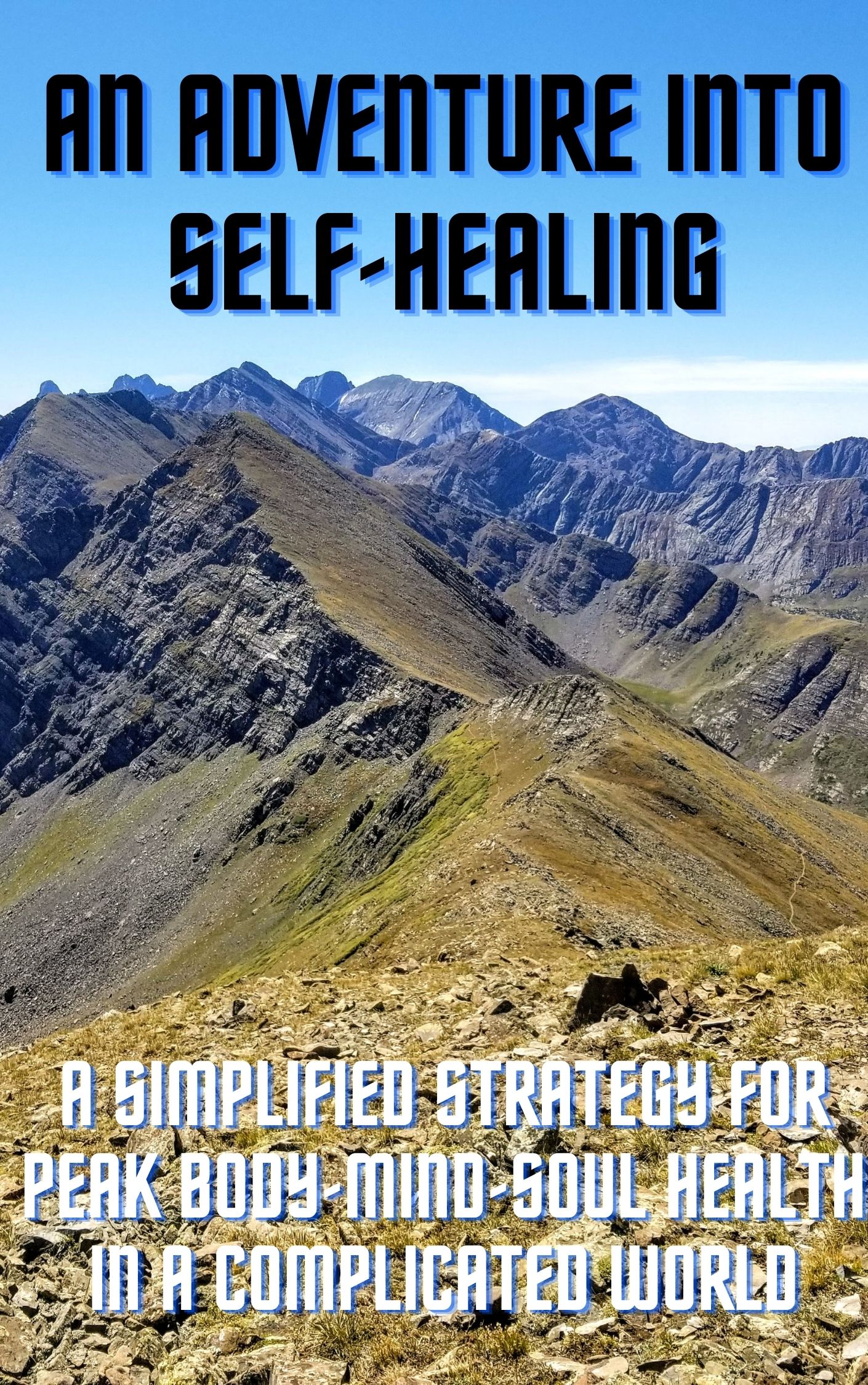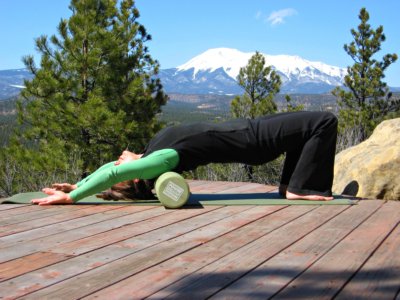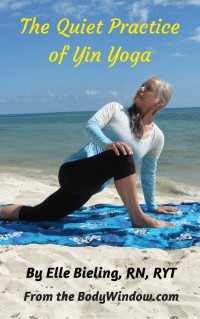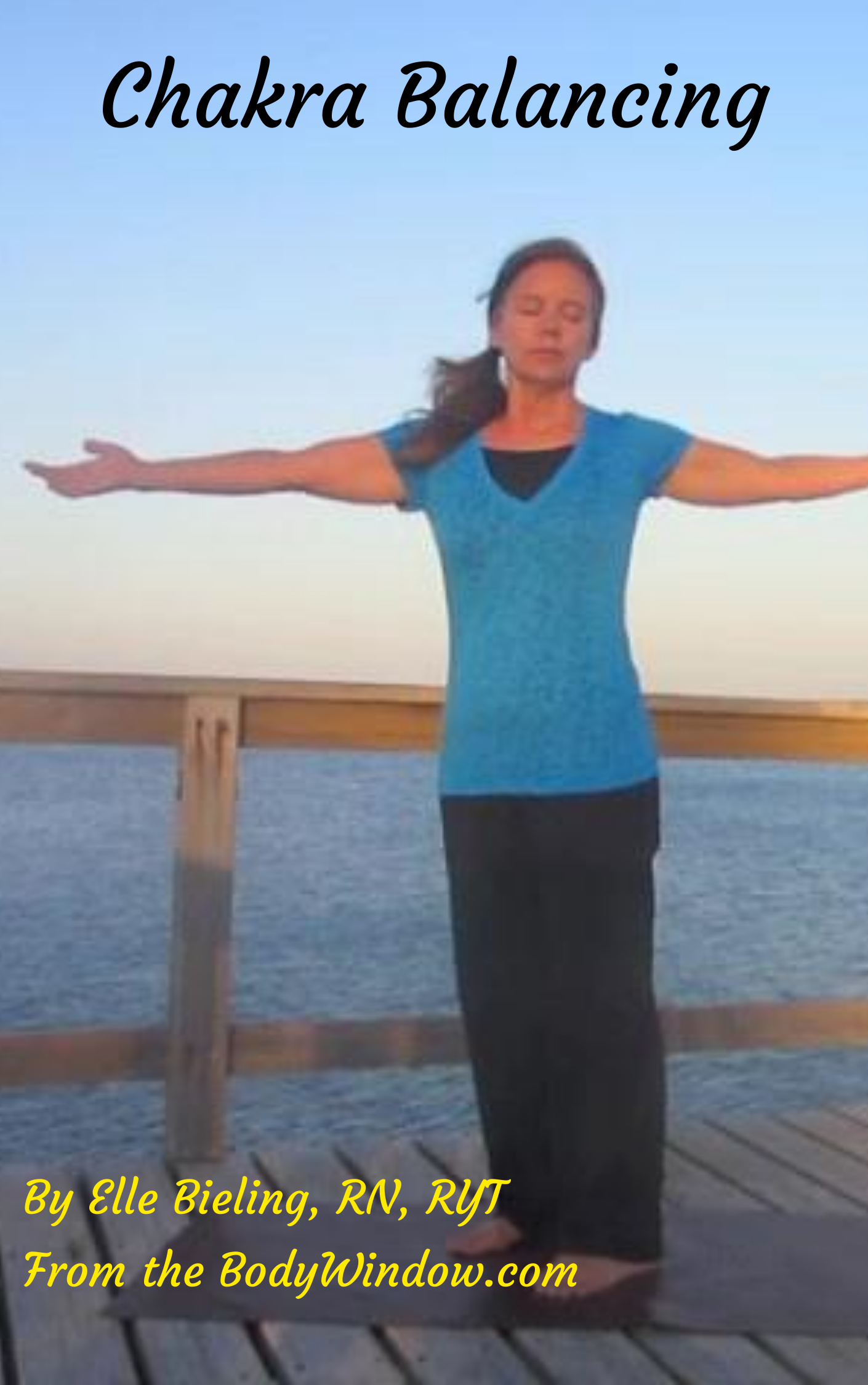Way ~ Through Your Body!
- Home
- Foam Rolling
- Using Your Foam Roller for Developing Intuition
Using Your Foam Roller for Developing Intuition
The benefits to using a foam roller are more than physical. If used as an intuitive tool, you can discover yourself in a new way!
'Tension is who you think you should be. Relaxation is who you are.' ~ Chinese Proverb
The other day as I was doing my exercises on my roller, I was dreaming of having a class where I would help folks understand this phenomenal source of self-therapy. As I have discussed in many articles, the simple roller is a way to get to know yourself in a new way. I would love to teach what I know in an actual classroom, if people would come!
The Body Window's Self-Guided Healing Course is Now Reduced to only 19.95 USD!
Click here to learn more about how this healing course can change your life!
As I rolled, I asked myself if this form of self-massage could be taught to others? At first I thought, "yes!" this incredible therapy must be taught. Then I began thinking deeper on how I actually move on my roller.
There is a definite intuitive component to foam rolling your body on a hard core roller.
An instructor is unable to tell you where your muscle knot is, and is
also unable to tell you when it releases. It must be felt entirely by
the person on the roller, and only that person.
Foam Rolling vs. Foam Holding
I am now seeing more articles coming out in the fitness forums and blogs about how it shouldn’t be called foam rolling at all! It should be called foam 'holding.'
Of course, the blogs are right to a certain degree. I agree that foam roller exercises are much more than just rolling and sawing back and forth.
Self-myofascial release happens when you roll onto a sore spot, then you hold that area for 20-30 seconds as you apply pressure and deep breathe to get the muscle to release. It is a physical phenomenon that has emotional and spiritual consequences too ~ if you let it.
However, without a long, round hard core roller, it would be very difficult to find your held muscle tension. You find your muscle tension by initially rolling over it. It would be hard to do this with a square block, don’t you think? That is why most forms of myofascial release are done with round objects, like different sized body balls, tennis balls and foam rollers. You find the spot to treat by rolling onto it.
While I sink into the muscle knot or "hot spot" I hold the pressure on the sore area for a long time. The release only comes with coordinated breathing, and sometimes I extend my leg or twist in such a way as to increase the stretch in the sore area while I am adding the pressure.
This sort of intuitive movement would be very difficult to teach. It comes only with practice and experimenting with your body responses.
I learned to do this sort of movement on my roller entirely intuitively. No one taught me. I just went where my heart desired instead of following some sort of rule book or someone’s instructions. I never felt that I needed someone to tell me exactly what to do, because there is nothing exact about listening to my body. It is my body after all.
This is similar to why I dislike yoga classes. I learned a long time ago that there is almost no time or space in a yoga class for intuitive movement. All the yoga classes that I have ever attended are about dutifully following the class instructor, doing exactly what she does, how often and how quickly or slowly.
I was in one class where we must have done 30 downward dogs in the course of 50 minutes! This was certainly not moving where my own heart was longing to go or as fast or as slow or as often as it wanted to go.
Much is said about developing your own practice in yoga, but no one feels comfortable creating or doing his or her own practice. At least not many to whom I talk!
The ego usually takes over and makes yoga into a 'workout.' Or worse, the ego demands perfection in performance. This is why I now do yoga mostly at home by myself.
Do We Live in an Exact and Perfect World?
Is yoga really an exact science? Is body rolling really an exact science? Can movements done intuitively, from the body-mind-soul ever be non-healing?
If you trust your intuition of your body, not pushing through any pain, can you really harm yourself? Does our world have to be perfect, cookie-cutter and formulaic?
Isn’t developing intuition for personal healing what it is all about?
If we strive to be perfect, and hold that yoga pose exactly like our ego must, could we intuitively let go when we should? How will you trust the process, the journey of self-discovery if you can’t trust your intuition? Can you check your ego at the door?
For me, the answer is in not having an audience, but developing my own yoga and body rolling practice at home. It is developing intuition for myself, so that I learn to trust my instincts and trust my body’s messages. Developing intuition for myself is taking the time to listen to my body and feel its responses very carefully.
I can go to hundreds of YouTube videos and see all the foam roller instructions I can possibly want to see. However, none of the instructions tell you how to move intuitively for your best personal results.
Everyone wants to be your expert and tell you exactly what you should or should not do. None of them teach you how to develop intuition of your own.
Instead, I challenge you to put on meditative music the next time you get out your roller. Turn the lights low. Really feel your body’s response to the movement on the roller, as you roll slowly on the areas that you know need attention.
When you find a sore muscle knot, stay on that spot. Breathe deeply. Tell your muscle to relax. See if you feel like moving slightly more to the left or to the right.
Feel if you need to stack a leg on top of the other to increase the pressure. What happens when you lean more into the stretch by extending a leg or bending more at the waist? What happens when you move a bit on your muscle to the left or right or farther up or down?
Why do you hold tension in one particular muscle area? What is the metaphysical cause of this tension?
If you really want to explore the significance of each body part and your habitually held tensions, scroll to the bottom of this page and read about foam rolling your specific problem area. Your tensions are significant to you and your way of responding to your environment!
Experiment on your roller. Go intuitively where you have never gone before! Take the time and the energy to really understand your body to develop intuition that is already there.
Become your body’s best friend as you allow yourself to trust your intuition and to let it take over. Learn to meet your body in a new way!
How to Pick the Right Foam Roller for You
A beginner should ALWAYS buy a 36 inch, full round foam roller. They are much easier to roll on than the 18 inch ones. Plus you can do so much more on a long foam roller, as my roller exercises show.
You can buy a very inexpensive white roller that is the cheapest and softer to start like a traditional, open cell, white roller. This one is very reasonably priced. The less expensive ones may compress sooner, especially if you are a frequent user, but this roller really is a great place to start.
After you get used to the
feeling of the pressure and your muscles learn to enjoy the self-massage
of the myofascial release, you can graduate to a more high density foam roller. It has a hard core and won't compress as quickly.
However, when I have really overdone it and have gone mountain climbing
a long distance, my hips tighten up like a drum. Then the only thing
that I use to break up the tension is a PVC pipe. Yes, you heard me
right.
The PVC pipe I use is wrapped in a cushion from an old yoga mat that I cut to fit. I had my husband glue on the yoga mat so that it wrapped inside the tube to soften the edges as well. I don’t use this much as it really hurts and digs. Please don’t start out with this hard of a device, or you will never foam roll again!
I have read where some folks have success with a 2 liter, plastic coke bottle that is filled with water and frozen. You can apply ice when you roll at the same time. I always felt that this would be awkward, but if you feel drawn to it, try it out. It won’t cost you much!
May you discover a new, intuitive practice on your foam roller. May you leave your ego behind as you move intuitively and find out where it is that your hold your tension most. May the new discoveries you find hidden in your body, bring your healing of your body-mind-soul!
MY COMPLETE FOAM ROLLING SERIES OF ARTICLES:
- Myofascial Release ~ The Self-Emptying of Body-Mind-Soul Kenosis
- Using Your Roller for Developing Intuition.
Foam Roller Exercises for the Lower Body and Lower Back:
- Lower Back (Lumbar Spine).
- Hip Muscles that Focus on Opening Your Hip.
- Iliopsoas (Hip Flexors).
- Piriformis and Gluteus Muscles (Hip Muscles).
- Iliotibial Band (IT Band) and Tensor Fasciae Latae (TFL) Muscles (Side of the Thigh).
- Adductor Muscles (Groin Muscles of the Inner Thigh).
- Hamstring Muscles and Quadriceps Muscles (Thigh Muscles).
- Gastrocnemius Muscles (Calves) and Anterior Tibialis Muscles (Shins).
Foam Roller Exercises for the Upper Body and Upper Back:
- Upper Back (Thoracic Spine).
- Shoulder Muscles that Focus on Opening the Shoulder.
- Trapezius Muscles.
- Latissimus Dorsi (Muscles in the Side and Back).
- Pectoral Muscles that focus on Opening your Chest.
- Upper Arms ~ Biceps and Triceps.
- Forearms ~ Brachioradialis, Wrist Flexors and Extensors.
Can't find what you're looking for? Search this website:
Support This Website and Its Mission
Thank you so much for considering a donation to help support this website. I appreciate your thank-you for access to so much free information. If you feel you have been blessed by this website, thank-you for your donation! I promise, that I will continue to provide you with lots of information and pay it forward to all in whatever way I can!
© Copyright 2009-2025, by Elle Bieling, BodyWindow.com
All Rights Reserved
We also hereby confirm, as stated in our Privacy Policy, that we do not sell personal information of any kind.
Protected by Copyscape Plagiarism Checker ~ Do not copy content from this page.
Information on this website is not intended for medical advice. See your health care provider for any health concerns. By using this website and/or practicing any yoga postures, foam rolling exercises or other physical movements contained herein, you are agreeing that you are in good health, cleared by your healthcare professional to participate in physical activities and you release The Body Window from any liability involved in the practice.



